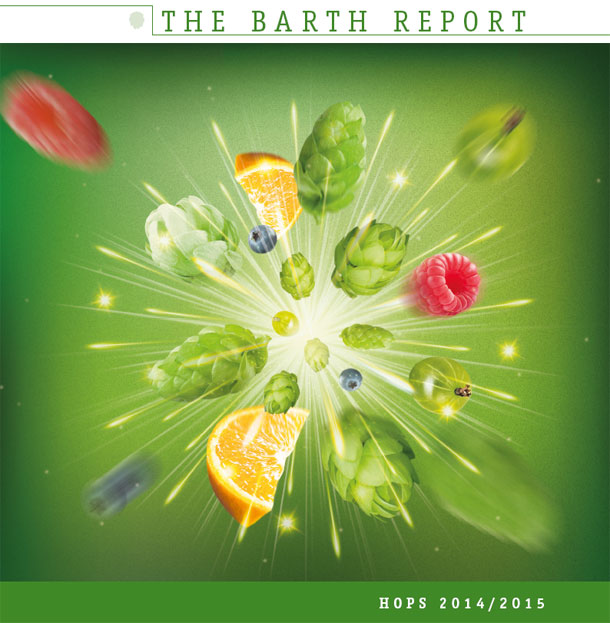
There went my Friday morning. No time to read hundreds thousands of tweets hypothesizing about the implications of the Duvel Moortgat/Firestone Walker deal. The Barth Report for 2014-2015 is available to download, and to print, because the best way to make sense of all the information included about hops it is to underline the key passages using different color pens.
Some of the news isn’t as newsy in the past. These days, the US June acreage report gets quickly publicized and dissected and the Barth-Haas Group, the world’s largest hop broker, issues a similar world update even before its annual report is out. But this is the one published since the nineteenth century, with reports going back to 1909 available online. Each year it collects statistics about the businesses of brewing and hops everywhere, and over time that provides important context.
Meanwhile, the cover (pictured above) says something about right now. “A Firework of Hop Varieties” occupies the space at the end of the report reserved to look at current issues (for instance, organic hop farming in the 2010-2011 report). Depending how deeply you have already descended into the hops rabbit hole this could look very 2012 to you, but for many in the beer world it is still uncharted territory:
“From a state of insignificance in regard to taste and appreciated mostly for their bitterness, hops have worked their way to the gustatory core of most craft beer recipes. Today, brewers exchange opinions on the sensory impressions of a wide range of hop varieties in a depth and with emotions which until recently only wine connoisseurs were known. Demand for new hop varieties is showing no sign of abating and is inspiring hop breeders all over the world. Regardless of the time-consuming process of traditional hop breeding (8 – 10 years until a new variety is ready for the market), in the past five years, many new hop varieties have been brought to market at shorter intervals. A common feature of virtually all the new varieties is that they are able to offer particularly sought-after fruity notes.”